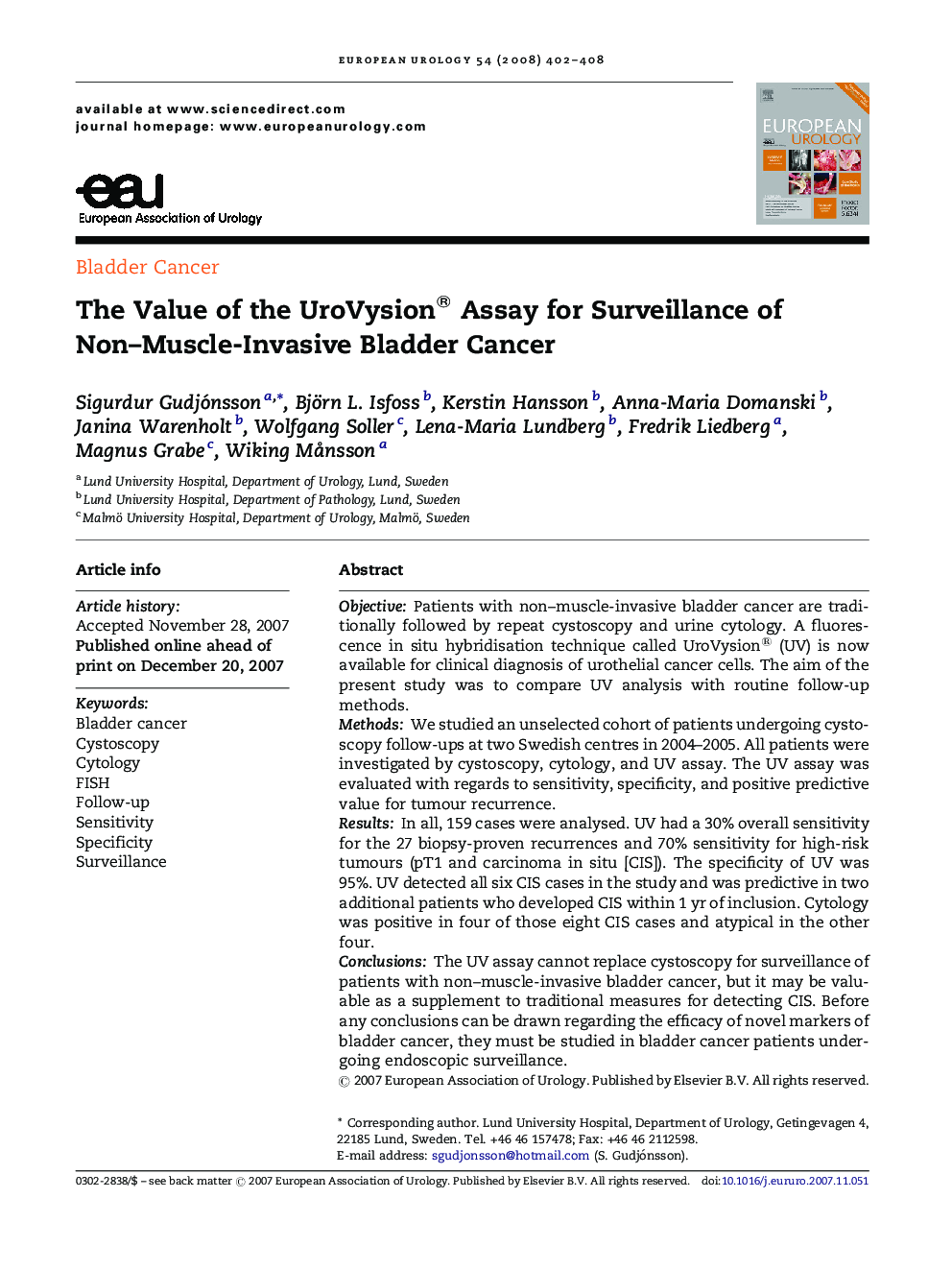| Article ID | Journal | Published Year | Pages | File Type |
|---|---|---|---|---|
| 3923210 | European Urology | 2008 | 7 Pages |
ObjectivePatients with non–muscle-invasive bladder cancer are traditionally followed by repeat cystoscopy and urine cytology. A fluorescence in situ hybridisation technique called UroVysion® (UV) is now available for clinical diagnosis of urothelial cancer cells. The aim of the present study was to compare UV analysis with routine follow-up methods.MethodsWe studied an unselected cohort of patients undergoing cystoscopy follow-ups at two Swedish centres in 2004–2005. All patients were investigated by cystoscopy, cytology, and UV assay. The UV assay was evaluated with regards to sensitivity, specificity, and positive predictive value for tumour recurrence.ResultsIn all, 159 cases were analysed. UV had a 30% overall sensitivity for the 27 biopsy-proven recurrences and 70% sensitivity for high-risk tumours (pT1 and carcinoma in situ [CIS]). The specificity of UV was 95%. UV detected all six CIS cases in the study and was predictive in two additional patients who developed CIS within 1 yr of inclusion. Cytology was positive in four of those eight CIS cases and atypical in the other four.ConclusionsThe UV assay cannot replace cystoscopy for surveillance of patients with non–muscle-invasive bladder cancer, but it may be valuable as a supplement to traditional measures for detecting CIS. Before any conclusions can be drawn regarding the efficacy of novel markers of bladder cancer, they must be studied in bladder cancer patients undergoing endoscopic surveillance.
